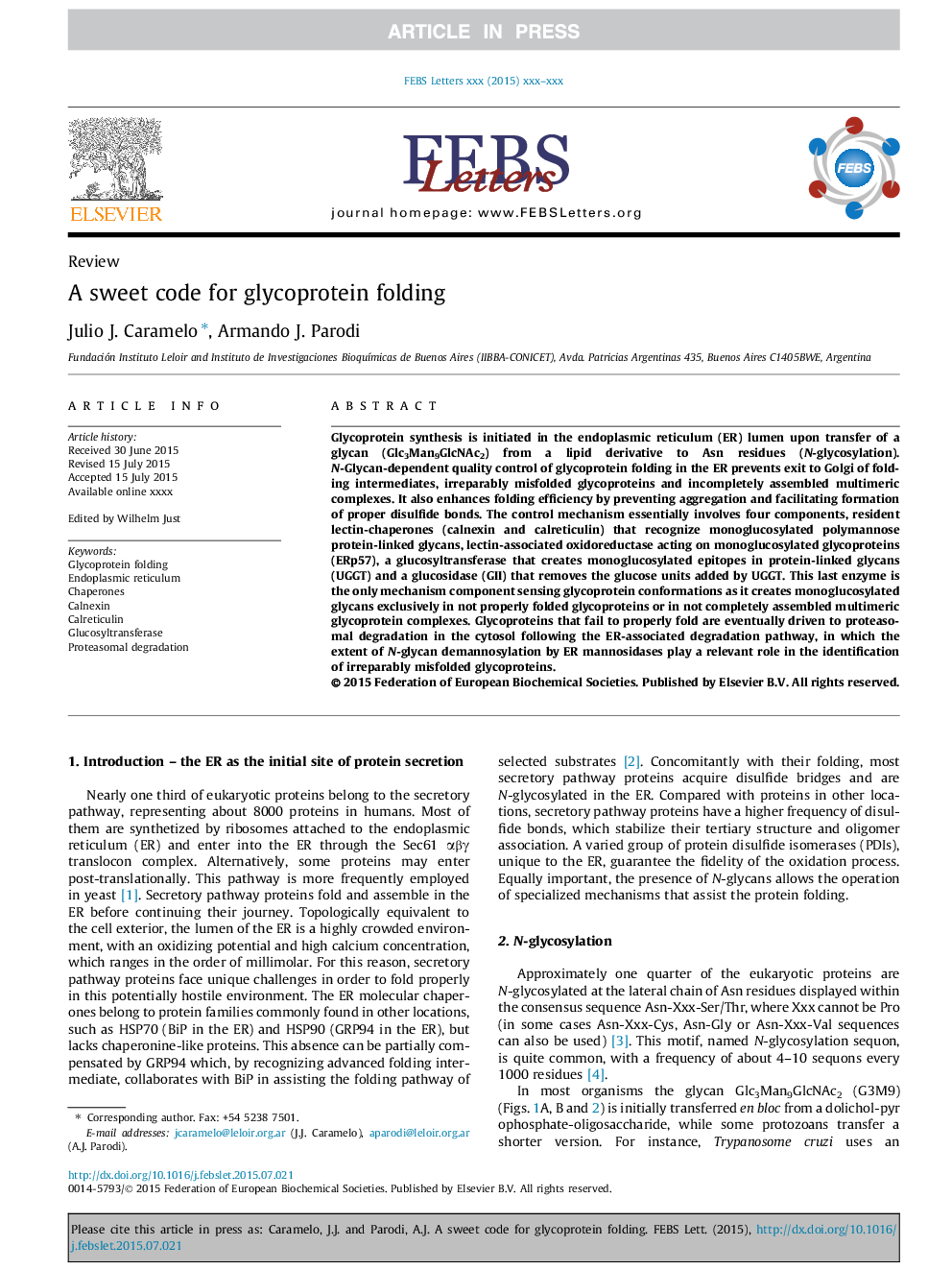| کد مقاله | کد نشریه | سال انتشار | مقاله انگلیسی | نسخه تمام متن |
|---|---|---|---|---|
| 10869829 | 1073973 | 2015 | 9 صفحه PDF | دانلود رایگان |
عنوان انگلیسی مقاله ISI
A sweet code for glycoprotein folding
ترجمه فارسی عنوان
یک کد شیرین برای گلیکوپروتئین تاشو
دانلود مقاله + سفارش ترجمه
دانلود مقاله ISI انگلیسی
رایگان برای ایرانیان
کلمات کلیدی
موضوعات مرتبط
علوم زیستی و بیوفناوری
علوم کشاورزی و بیولوژیک
دانش گیاه شناسی
چکیده انگلیسی
Glycoprotein synthesis is initiated in the endoplasmic reticulum (ER) lumen upon transfer of a glycan (Glc3Man9GlcNAc2) from a lipid derivative to Asn residues (N-glycosylation). N-Glycan-dependent quality control of glycoprotein folding in the ER prevents exit to Golgi of folding intermediates, irreparably misfolded glycoproteins and incompletely assembled multimeric complexes. It also enhances folding efficiency by preventing aggregation and facilitating formation of proper disulfide bonds. The control mechanism essentially involves four components, resident lectin-chaperones (calnexin and calreticulin) that recognize monoglucosylated polymannose protein-linked glycans, lectin-associated oxidoreductase acting on monoglucosylated glycoproteins (ERp57), a glucosyltransferase that creates monoglucosylated epitopes in protein-linked glycans (UGGT) and a glucosidase (GII) that removes the glucose units added by UGGT. This last enzyme is the only mechanism component sensing glycoprotein conformations as it creates monoglucosylated glycans exclusively in not properly folded glycoproteins or in not completely assembled multimeric glycoprotein complexes. Glycoproteins that fail to properly fold are eventually driven to proteasomal degradation in the cytosol following the ER-associated degradation pathway, in which the extent of N-glycan demannosylation by ER mannosidases play a relevant role in the identification of irreparably misfolded glycoproteins.
ناشر
Database: Elsevier - ScienceDirect (ساینس دایرکت)
Journal: FEBS Letters - Volume 589, Issue 22, 14 November 2015, Pages 3379-3387
Journal: FEBS Letters - Volume 589, Issue 22, 14 November 2015, Pages 3379-3387
نویسندگان
Julio J. Caramelo, Armando J. Parodi,
